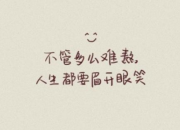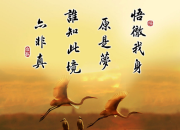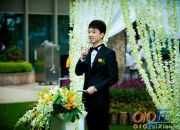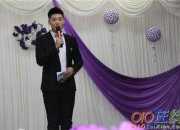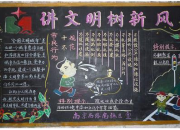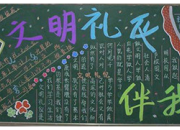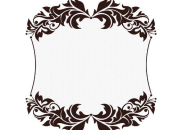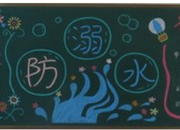英美文学试题
时间:2021-08-3120xx年英美文学试题
20xx年英美文学试题
PART ONE (40 POINTS)
I. Multiple Choice (40 points in all, 1 for each)
Select from the four choices of each item the one that best answers the question or completes the statement. Write your choice on the answer sheet.
1.The most significant idea of the Renaissance is( ).
A. humanism B. realism C. naturalism D. skepticism
2.Shakespeare’s tragedies include all the following except( ).
A. Hamlet and King Lear B. Antony and Cleopatra and Macbeth
C. Julius Caesar and Othello D. The Merchant of Venice and A Midsummer Night’s Dream
3.The statement “Studies serve for delight, for ornament, and for ability”opens one of well-known essays by
A. Francis Bacon B. Samuel Johnson C. Alexander Pope D. Jonathan Swift
4.In Hardy’s Wessex novels, there is an apparent( )touch in his description of the simple though primitive rural life.
A. nostalgic B. humorous C. romantic D. ironic
5.Backbite, Sneerwell, and Lady Teazle are characters in the play The School for Scandal by( ).
A. Christopher Marlowe B. Ben Jonson C. Richard Brinsley Sheridan D. George Bernard Shaw
6.Of all the 18th century novelists Henry Fielding was the first to set out, both in theory and practice, to write specifically a“( )in prose,”the first to give the modern novel its structure and style.
A. tragic epic B. comic epic C. romance D. lyric epic
7.In his poem “Tyger, Tyger,”William Blake expresses his perception of the“fearful symmetry”of the big cat. The phrase“fearful symmetry”suggests( ).
A. the tiger’s two eyes which are dazzlingly bright and symmetrically set B. the poet’s fear of the predator
C. the analogy of the hammer and the anvil D. the harmony of the two opposite aspects of God’s creation
8.“What is his name?”
“Bingley.”
“Is he married or single?”
“Oh! Single, my dear, to be sure! A single man of large fortune; four or five thousand a year. What a fine thing for our girls!”
The above dialogue must be taken from( ).
A. Jane Austen’s Pride and Prejudice B. Emily Bronte’s Wuthering Heights
C. John Galsworthy’s The Forsyte Saga D. George Eliot’s Middlemarch
9.The short story“Araby”is one of the stories in James Joyce’s collection( ).
A. A Portrait of the Artist as a Young Man B. Ulysses C. Finnegans Wake D. Dubliners
10.William Wordsworth, a romantic poet, advocated all the following except( ).
A. the using of everyday language spoken by the common people
B. the expression of the spontaneous overflow of powerful feelings
C. the humble and rustic life as subject matter
D. elegant wording and inflated figures of speech
11.Here are two lines taken from The Merchant of Venice:“Not on thy sole, but on thy soul, harsh Jew/Thou mak’st thy knife keen.”What kind of figurative device is used in the above lines?
( ) A. Simile. B. Metonymy. C. Pun. D. Synecdoche.
12.“If Winter comes, can Spring be far behind?”is an epigrammatic line by( ).
A. J. Keats B. W. Blake C. W. Wordsworth D. P. B. Shelley
13.The poems such as“The Chimney Sweeper”are found in both Songs of Innocence and Songs of Experience by
A. William Wordsworth B. William Blake C. John Keats D. Lord Gordon Byron
14.John Bunyan’s Pilgrim’s Progress is often regarded as a typical example of( ).
A. allegory B. romance C. epic in prose D. fable
15.Alexander Pope strongly advocated neoclassicism, emphasizing that literary works should be judged by( )rules of order, reason, logic, restrained emotion, good taste and decorum.
A. classical B. romantic C. sentimental D. allegorical
16.In his essay“Of Studies,”Bacon said:“Some books are to be tasted, others to be swallowed, and some few to be chewed and( ).”
A. skimmed B. perfected C. imitated D. digested
17.“For I have known them all already, known them all—/Have known the evenings, mornings, afternoons,/I have measured out my life with coffee spoons.”The above lines are taken from( ).
A. Wordsworth’s “The Solitary Reaper” B. Eliot’s“The Love Song of J. Alfred Prufrock”
C. Coleridge’s“Kubla Khan” D. Yeats’s“The Lake Isle of Innisfree”
18.(The)( )was a progressive intellectual movement throughout Western Europe in the 18th century.
A. Romanticism B. Humanism
C. Enlightenment D. Sentimentalism 19.A typical Forsyte, according to John Galsworthy, is a man with a strong sense of( ), who never pays any attention to human feelings.
A. morality B. justice C. property D. humor
20.The typical feature of Robert Browning’s poetry is the ( ).
A. bitter satire B. larger-than-life caricature C. Latinized diction D. dramatic monologue
21.George Bernard Shaw’s play, Mrs. Warren’s Profession is a grotesquely realistic exposure of the( ).
A. slum landlordism B. political corruption in England
C. economic oppression of women D. religious corruption in England
22.The story starting with the marriage of Paul’s parents Walter Morel and Mrs. Morel must be
A. Thomas Hardy’s Tess of the D’Urbervilles B. D. H. Lawrence’s Sons and Lovers
C. George Eliot’s Middlemarch D. Charlotte Bronte’s Jane Eyre
23.In American literature the first important writer who earned an international fame on both sides of the Atlantic Ocean is( ). A. Washington Irving B. Ralph Waldo Emerson C. Nathaniel Hawthorne D. Walt Whitman
24.The American novelist Nathaniel Hawthorne is known for his“black vision.”The term“black vision”refers to
A. Hawthorne’s observation that every man faces a black wall
B. Hawthorne’s belief that all men are by nature evil
C. that Hawthorne employed a dream vision to tell his story
D. that Puritans of Hawthorne’s time usually wore black clothes
25.Theodore Dreiser was once criticized for his( )in style, but as a true artist his strength just lies in that his style is very serious and well calculated to achieve the thematic ends he sought.
A. crudeness B. elegance C. conciseness D. subtlety
26.“He is the last of the romantic heroes, whose energy and sense of commitment take him in search of his personal Grail; his failure magnifies to a great extent the end of the American Dream.”The character referred to in the passage is most likely the protagonist of( ).

